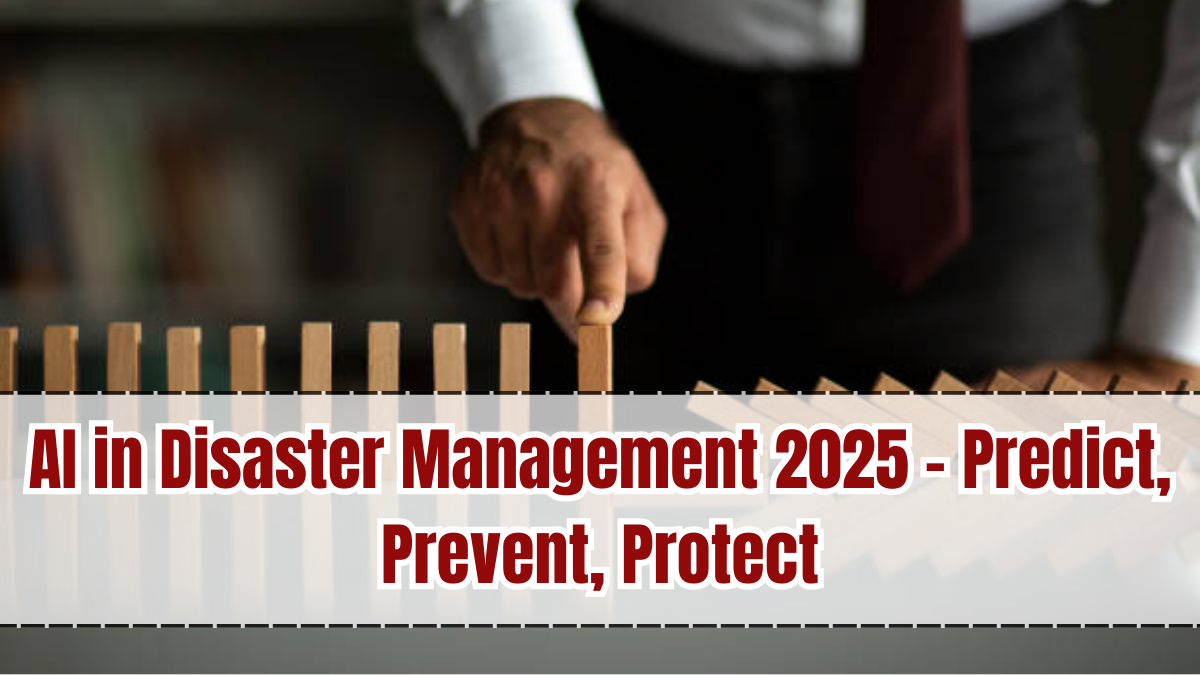Natural disasters such as floods, earthquakes, cyclones, and wildfires have always posed a massive threat to human life and infrastructure. With climate change intensifying these risks, the need for efficient disaster response has become critical. In 2025, AI in Disaster Management is transforming the way authorities predict, prevent, and protect communities. By analyzing real-time data, AI systems are enabling governments and rescue teams to save lives, reduce losses, and respond faster than ever before.

What is AI in Disaster Management?
AI in Disaster Management refers to the use of artificial intelligence tools, predictive algorithms, and data-driven technologies to anticipate, monitor, and mitigate disasters. These systems use large-scale data from satellites, sensors, drones, and social media to provide accurate forecasts and quick response solutions.
Key functions include:
-
Predicting disasters with advanced AI modeling.
-
Real-time alerts to authorities and citizens.
-
Risk mapping to identify vulnerable zones.
-
AI-powered drones for search and rescue operations.
-
Resource allocation for emergency relief distribution.
Why AI in Disaster Management is Crucial in 2025
The importance of AI-based disaster management has grown significantly due to:
-
Climate Change: Increasing frequency of floods, cyclones, and wildfires.
-
Population Density: More people living in disaster-prone areas.
-
Economic Losses: Billions lost annually due to poor disaster preparedness.
-
Response Gaps: Traditional systems are often too slow to prevent major damage.
-
Technology Readiness: AI tools are now accurate enough to guide disaster planning.
This makes AI in Disaster Management 2025 a global necessity for both developed and developing nations.
Benefits of AI in Disaster Management
The use of AI is bringing life-saving advantages:
-
Early Warnings: AI provides accurate forecasts days before disasters strike.
-
Faster Evacuations: Timely alerts give people more time to move to safety.
-
Efficient Rescue Operations: Drones and robots assist in finding survivors quickly.
-
Reduced Human Error: AI systems process massive data faster than manual methods.
-
Better Resource Planning: Governments allocate relief materials based on AI-driven needs analysis.
-
Community Awareness: AI chatbots provide simple instructions to the public during crises.
Role of Technology
Technology is the backbone of AI disaster management systems. In 2025, these solutions rely on:
-
Machine learning models to predict earthquakes, storms, and floods.
-
IoT sensors detecting ground vibrations, water levels, and air quality.
-
Satellite imagery for real-time monitoring of disaster zones.
-
AI drones mapping affected areas and guiding rescue teams.
-
Cloud platforms storing and analyzing massive data sets.
-
AI-powered chatbots providing citizens with emergency guidance.
These innovations make disaster response smarter, faster, and more reliable.
Government and Private Sector Initiatives
Governments, NGOs, and private companies are working together to deploy AI disaster management solutions. Initiatives in 2025 include:
-
AI-based flood warning systems in South Asia.
-
Wildfire detection drones in Australia and California.
-
Earthquake prediction models in Japan and Chile.
-
Cyclone tracking AI platforms in coastal nations.
-
Partnerships with tech companies like Google and Microsoft for data processing.
Such collaborations ensure that AI solutions are accessible globally, not just in advanced nations.
Future of AI in Disaster Management
The future promises even more advanced disaster management systems:
-
Autonomous rescue robots assisting in dangerous environments.
-
AI-integrated smart cities designed to minimize disaster risks.
-
Global AI disaster networks sharing data across countries for quicker responses.
-
Predictive healthcare AI to anticipate medical needs post-disaster.
-
VR-based training simulations preparing citizens and responders for emergencies.
This future will make communities safer, stronger, and better prepared for natural calamities.
FAQs
What is AI in Disaster Management 2025?
It is the use of artificial intelligence, sensors, and predictive models to forecast, monitor, and manage natural disasters efficiently.
How does AI help in saving lives during disasters?
AI provides early warnings, predicts risks, guides evacuations, and assists rescue teams with real-time data and drone technology.
Which technologies power AI disaster management?
It uses machine learning, IoT sensors, satellite data, drones, and cloud computing for disaster prediction and response.
Are AI disaster management systems affordable?
Yes, while initial investments are high, they significantly reduce long-term losses and are supported by governments and NGOs.
What is the future of AI in disaster management?
The future includes autonomous rescue robots, global AI disaster networks, and predictive healthcare systems for post-disaster recovery.
Click here to know more.
